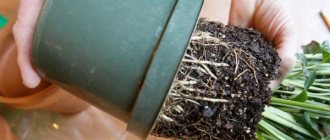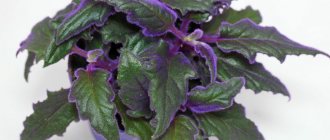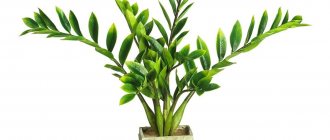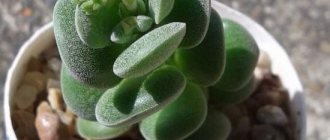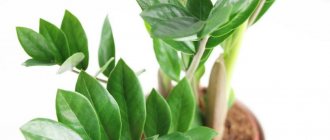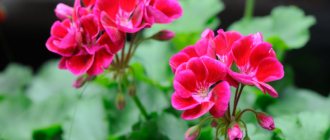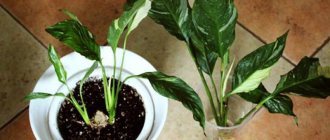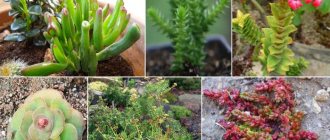A genus such as Melaleuca (tea tree) is directly related to the Myrtle family. It unites approximately 200 species of evergreen shrubs and trees. In nature, they can be found in Indonesia, New Caledonia, Australia, Papua New Guinea, and also in Malaysia.
The simple leaves are lanceolate or ovoid in shape, and they are located alternately on the shoots in most cases. Some species have no petioles at all, while others have short petioles. The fragrant flowers are collected in rather loose inflorescences, shaped like a ball or a cylinder; they are similar in appearance to a panicle or brush. The peculiarity of the inflorescences is that each of them continues with new growth. The flower mainly consists of stamens, which are collected in 5 bunches. Its petals fall off when flowering is just beginning. Over time, in place of the flowers, strong closed capsules appear, inside of which there are seeds. These capsules are pressed very tightly to the branches.
Such a plant not only has unusually shaped inflorescences, it also has flaky bark, painted in a light color. There are species with bark peeling off in thin, rather large pieces, which is why the tea tree is also popularly called the paperbark tree.
And these trees and shrubs are medicinal, which was recognized by official medicine at the beginning of the 20th century. Any part of the plant contains essential oils in large quantities, which destroy microbes, viruses and fungi.
general information
Surely every gardener has a rough idea of what a tea tree looks like.
This is a large, beautiful evergreen plant that grows into a small spreading tree with age. Some Melaleuca species have very short petioles, while others have none at all.
Tea tree
The ovoid-shaped leaves are located one on each side. Fragrant flowers are united in loose cylindrical or spherical inflorescences. The flowers consist of a 5-tufted bouquet of stamens. The petals fall off at the very beginning of flowering. Subsequently, the flowers give way to strong, closed capsules with seeds, which lean very tightly against the branches.
The tree has a rather unusual light-colored flaky bark.
Interesting! In some species, the bark tends to peel off from the plant in thin but fairly wide layers. For this reason, Melaleuca received the name paperbark tree.
Another important feature of tea tree is its medicinal properties. The plant is rich in essential oils that actively fight germs, viruses and fungi.
For reference! Official medicine recognized the healing properties of melaleuca back in the first half of the 20th century.
Popular types of tea tree
There are currently over 200 species of Melaleuca known, but only a few are widely grown. Here are the most popular varieties with photos:
- Melaleuca bracteata - the tree grows up to 8 m, has gray bark with cracked vertical stripes. The color of the leaves is dark green, with a grayish tint. Inflorescences are cream-colored, cylindrical;
- Melaleuca heatherifolia is a dense shrub with a “papery” bark of a brownish or pale white hue. The leaves are dark green, linear, the flowers are creamy white;
- Alternate-leaved - is a beautiful tree up to 8 m tall. It is this variety that is grown for the production of essential oils on an industrial scale. The trunk is covered with the finest flaky bark, and the young branches contain snow-white flowers and bright green leaves;
- Nesophila is a spreading shrub with oval-shaped leaves. The main difference of the species is the bright pink inflorescences in the shape of a ball.
You can buy a tea tree seedling at a nursery or online plant store. The price will depend on the type of melaleuca, its height and the volume of the pot. For example, the cost of a bush from a rooted cutting 10 cm high in a square pot 9x9 cm starts from 300 rubles.
Melaleuca: home care
For home floriculture, it is recommended to choose the smallest types of tea tree, since they are much easier to grow and easier to care for. For example, these include the alternate-leaved melaleuca, the smallest member of the family that can be used to form bonsai.
Indoor mint: home care and methods of propagation
The tree has elongated and narrow leaves similar to conifer needles. According to reviews from flower growers, melaleuca of this species is an unpretentious plant, but for regular and abundant flowering it needs to be properly cared for.
- Watering
In the wild, melaleuca grows on river banks and in swampy areas. Therefore, it requires systematic, abundant watering. If the soil dries out completely, the plant may die. However, stagnant water can also harm the tree, as it causes rotting of the roots.
Melaleuca should be watered with soft, settled water. To soften hard tap water, add acetic or citric acid (in small quantities).
If the winter turns out to be quite cool, then the intensity of watering should be reduced slightly. Watering should be done after the top layer of the substrate has dried slightly.
- The soil
A neutral or slightly acidic well-drained soil substrate is suitable for growing tea tree.
To make an earthen mixture, you need to mix peat (2 parts) with turf soil (1 part) and sand (1 part).
Important! If the soil is being prepared for beautiful melaleuca, then more sand should be added to the substrate.
- Fertilizers
The tea tree needs periodic feeding. From mid-spring to mid-autumn it is necessary to fertilize once every two weeks.
For this purpose, mineral fertilizers are used, which are mixed with irrigation water in the proportion specified in the instructions.
- Humidity
In order to grow melaleuca, high air humidity is required. In winter, containers with plants should not be left near radiators.
The tree needs frequent spraying.
In addition, you should use pallets with wet expanded clay or pebbles.
Home care
How to grow lilacs on a windowsill
On cold winter evenings I really want to have a piece of spring at home. Lilac just symbolizes her arrival. If you wish, you can get a blooming sprig of lilac for the New Year holiday, but you will have to try for this.
To do this, in September-October, lilac shoots about 80 cm long are cut and packed in polyethylene, placed in the refrigerator, and kept in the refrigerator for 4-5 weeks.
Important! The temperature should be -2-5 degrees. After this, the shoots are dipped in a container with cold water for 10-12 hours. All that remains is to place the shoots in a container with clean water in a vertical position
Maintain the optimal temperature in the room:
All that remains is to place the shoots in a container with clean water in an upright position. Maintain the optimal temperature in the room:
After this, the shoots are dipped in a container with cold water for 10-12 hours. All that remains is to place the shoots in a container with clean water in an upright position. Maintain the optimal temperature in the room:
- 1 week – 25 degrees;
- Week 2 – 20 degrees;
- subsequent weeks – 18-20 degrees.
If all conditions are met, you can get blooming lilacs on the windowsill in 3-4 weeks.
Trimming
The indoor tea tree needs systematic annual pruning. The shape of the plant after the procedure can be absolutely any, since it largely depends on the wishes of the grower himself.
Bouvardia flower: home care and methods of propagation
The tree is very flexible to shape changes, so it can be shaped both as a bush and as a tree. In addition, pruning allows you to get rid of faded branches, which often spoil the appearance of the plant.
Young trees do not need pruning. For better branching of the bushes, they should be cut at a height of 10 centimeters.
Note! As the tree grows, each new stem should be trimmed until the desired degree of branching is established.
There are only 5 types of tea tree pruning. They differ in that as a result of using each of them the plant will look different.
Trimming types:
- modeling;
- light;
- deep;
- heavy;
- under the root.
Modeling pruning is used to accelerate the growth of buds in young plants, improve and organize branching, develop the “skeleton” of the tree, as well as strengthen lateral branches and form layers. Side branches strengthen the tea bush, increase the bearing surface of the bush and help it survive low temperatures during frosty periods, which has a positive effect on yield.
Light pruning helps increase the number of buds. This type of pruning is used for plants intended for the cultivation of this raw material - tender buds. It is worth noting that after a certain number of procedures the buds become coarser, and at the same time the nutritional strength of the plant is significantly reduced. During this period, deep pruning will be most appropriate. To do this, 10-15 cm of branches along with foliage are cut from the bushes. This allows the tea tree to cope with stress more easily and also helps restore strength.
Tea tree pruning
Heavy pruning and root pruning are intended to rejuvenate the plant. Some tree species, when they reach a certain size, begin to show signs of aging. In this case, light pruning methods do not help, so heavy pruning is used.
About 30 cm is cut from the plants, and if the tree is quite tall, then you can trim up to half its height. In case of a serious disease, the bush is cut off at the root, leaving no more than 10 cm above the ground. This type of pruning is sometimes used before replanting the plant.
Description of the plant
Melaleuca belongs to a large genus of plants in the Myrtaceae family.
Small bushes or tall trees have a pleasant, tart aroma. The maximum height of the trees reaches 25 m. The rhizome of the plant is branched. The trunk and branches are covered with thin light brown or gray bark. It is easily damaged and peels off, forming something like a paper wrapper. Video course “Spring”
Landscaping for busy people, a beautiful garden without the hassle
A training course for those who want to make their dacha beautiful and prefer to spend their time, effort and money wisely.
Special offer! 83% discount! Make good use of your self-isolation!
₽ 5000 ₽ 790
MORE ❯❯❯
The alternate petiolate leaves have a narrow lanceolate shape and a bright green color. The length of the leaf can reach 12 cm, and the width does not exceed 5 mm. From a distance, these narrow, entire leaves resemble needles. Along the edge of the leaf blade there are small glands that secrete essential oil. Melaleuca oil has pronounced bactericidal and stimulating properties. It is widely used in medicine and cosmetology.
Small flowers are collected in a large spherical or oval inflorescence. Yellow, cream or pink buds with narrow, long petals from a distance resemble a brush or pipe cleaner. Inflorescences form on young shoots and can alternate with foliage. Where the flowers end, the branch may still continue.
The oldest existing tea tree. Age 3000 laziness (China, Yunnan)
Each bud consists of five sepals and bunches of stamens. The sepals fall off almost immediately, and the long stamens attract insects, small birds and even bats. Melaleuca is a good honey plant.
After the flowers wither, strong capsules with many small seeds remain on the branches. They remain tightly closed and do not fall off even after full ripening. The seeds remain viable for a very long time, but often fall into the ground only after the death of the mother plant.
Features of transplantation
Young tea trees develop quite quickly, so they need to be replanted annually. For adult plants, the norm is one transplant every 2-3 years.
Catharanthus flower: home care and methods of propagation
With each subsequent procedure, you need to select a new pot that is larger in volume than the previous one. If the melaleuca grows too much, you need to partially trim the root system, followed by replanting it in a new container.
Important! Sufficient drainage must be used when replanting.
The soil mixture should include peat (2 parts), sand (1 part) and turf soil - an earthen layer of small fallen twigs, dry leaves and grass residues (1 part).
Tea tree transplant
Description
Melaleuca is the shortest genus of the Myrtaceae family. It is a small evergreen tree and shrub. The etymology of the name "melaleuca" (translated from ancient Greek - "black and white") is associated with frequent forest fires in tropical latitudes, as a result of which the light gray bark of the tree burns. Distribution areas: Australia, New Zealand, Indonesia, Philippines and the American tropics.
The second name of the genus is Australian tea tree. Contrary to popular belief, Melaleuca has nothing to do with the tea industry, since the homeland of the shrub, from the leaves of which the tart drink is made, is South Asia.
There are more than 200 species of Melaleuca in nature, and only two of them are cultivated as indoor plants. The morphological properties of the woody representatives of the genus are close to Eucalyptus. The thick, dark green crown resembles a conifer. The leaves are lanceolate, from 1 to 20 cm long, arranged alternately with or without barely noticeable petioles. The flowers are small, fragrant, collected in fluffy spikelets with long stamens. Interestingly, at home, the tea tree pleases with its flowering only in the sixth year.
In indoor plant growing, it is valued for its ability to create a spectacular bonsai tree. Essential oils from the leaves are successfully used in aromatherapy and have healing properties: antibacterial, antiviral and antifungal.
Reproduction methods
There are two ways to propagate melaleuca in a pot: seeds or cuttings.
Seeds
In order to propagate a tea tree by seeds, you need to do the following:
- Take boiled water into a container and soak the seeds in it. The duration of soaking is three days. The water needs to be changed daily.
- Discard the floating seed. Deepen the remaining seeds into a thin layer of slightly acidic soil. Cover the top with film or glass.
- Organize daily half-hour ventilation.
- When watering, make sure that the soil does not dry out or become sour.
- After 2-6 weeks, the first shoots should appear.
Cuttings
In the case of propagation by cuttings, the algorithm of actions is as follows:
- Select a number of lignified shoots up to 8 cm in length.
- Plant the cuttings in vermiculite (moist) and place them in a well-lit place.
- Cuttings can be fed with phytohormones. They significantly accelerate growth.
- Water regularly and avoid too little or too much moisture.
Variety of indoor tea
Former representatives of the genus Thea are included in the large genus Camellia and represent the tea family of the same name (Theaceae), along with 22 genera of related plants.
Former representatives of the genus Tea (Thea) are included in the large genus Camellia.
The teas are amazing in their variety. Their genus includes more than three hundred plant species. As for house plants, they cannot boast of diversity. Only Camellia sinensis or Chinese tea is grown in pots, as well as its various forms, hybrids and varieties, each of which has individual taste qualities.
When choosing tea that will show off in a pot on the windowsill, you need to focus on your taste preferences. It will not be easy to decide, because the varieties and varieties include the most famous options - from classic Yunnan to Assam, Shan, and Ceylon tea.
Medicinal properties
Tea tree essential oil is an excellent antiseptic, strong anti-inflammatory and antiviral agent. It has a number of useful properties, here are some of them:
- Relieves depression and stress. Melaleuca oil activates the brain, helps strengthen memory and improves perception of reality.
- Antibacterial, antiviral and antifungal properties. The oil can act as an alternative to a number of cold and flu medications. It contains compounds that fight bacteria, viruses and fungi.
- Anti-inflammatory and regenerating effect. Tea tree oil reduces inflammation and stimulates the work of white blood cells, which play a significant role in the healing process.
- Antifungal properties. The oil contains compounds that fight the growth and spread of mold on vegetables and fruits.
- Antioxidant properties. Tea tree essential oil, among other things, also has antioxidant properties.
Medicinal properties of malekuka
Note! In case of individual intolerance, essential oil should not be used.
Despite the fact that the tea tree is still a rather rare phenomenon that can rarely be seen at home, one can still note a trend towards its popularization. More and more often there are gardeners who, in search of something exotic, choose this particular plant. However, few of them, even after planting it in a pot, realize the value of this treasure.
Soil and fertilizing
Don't know what soil to use for planting hoya? Loose, breathable soil with a neutral acidity level is best suited. However, in most cases, the culture is unpretentious to the quality of the substrate. Professional flower growers use special soil for orchids, which can be purchased at flower shops, or make their own mixture by mixing peat, turf soil and sand in equal quantities.
Wax ivy reacts extremely positively to mineral fertilizing during the growing season, but it is best to refrain from organic matter. As fertilizers, you can also purchase special mixtures intended for orchids or succulents. If you follow the instructions for the drug, 1 feeding for 2 weeks will be enough. Remember that excess nutrients can negatively affect the health of the flower.
It is strongly not recommended to fertilize the flower immediately after replanting (provided that new soil is added). It is best to wait two to three months and only then start fertilizing. In winter, the vine is also not fed, since an excess of microelements in the soil can prevent it from entering the hibernation phase. But during the formation of buds, you can and should add mineral fertilizers to the water, because this will affect the size of the flowers!
Possible problems
In the process of propagating a money tree, problems sometimes arise that can be easily eliminated. The most common complications manifest themselves in this way.
- During the rooting of the shoots, the foliage begins to turn yellow - this indicates that the roots have begun to rot. The reason is excess moisture. If cuttings are carried out in water, then the shoot must be removed and dried again (1–2 days), and when rooting in a substrate, watering must be reduced and watered only when the soil is dry.
- When the cuttings are rooted in the soil, the leaves may dry out and fall off. This indicates insufficient soil moisture, which means the plant needs to be watered.
- The appearance of dark spots on the leaves of the shoot indicates the presence of an infection of fungal origin. It is a consequence of too much soil and air moisture. In this case, it is necessary to reduce watering of the plant and air it more often. For prevention, it is recommended to spray it with a fungicide.
- Leaves or cuttings may not take root for a long time. Delayed root growth in spring and summer may occur due to low temperature or lack of light. The shoots need to be placed in a brighter place and the temperature of their contents increased. If these measures do not produce results, then you can resort to the use of growth stimulants.
- The leaves of cuttings or young shoots become covered with spots. These are signs of an incipient fungal or bacterial infection. Treatment is carried out with special means by spraying the crown and watering the soil under the fat plant.
- The lower part of the cutting becomes dark and soft, which means rotting has begun. In this case, you need to cut off the rotten part of the cutting, grabbing some healthy tissue, dry it again and put it in water. For preventative purposes, a fungicide can be added to the water.
- Sometimes a change in the shape of the trunk occurs, manifested in its uneven thickening, or it deviates from the vertical and grows at an angle. This occurs due to a lack of light, which means it is necessary to provide the flower with sufficient lighting.
By adhering to these rules of propagation, cultivation and care recommendations, you can successfully grow a money tree - a symbol of prosperity and success.
To learn how to propagate a money tree, see the following video.
Common varieties
One of the famous domestic varieties is the Washington Navel orange. It is characterized by excellent taste. A medium-sized tree with a spreading crown and rich green foliage. The flowers are white in color, collected in small inflorescences with a pleasant smell. The fruits are round in shape with a navel at the top and are large in size. Average weight 0.5 kg. The skin of the fruit is mostly smooth or rough, and is easily separated from the fruit. The fruits ripen at the end of the year. The pulp is divided into 13 sectors by partitions of medium thickness and contains a large percentage of juice. This type of culture is propagated by cuttings, especially when moistened in growth-stimulating substances.
Pavlovsky. The description of the variety comes down to the following: it is very good for growing in apartment conditions. The tree grows up to 100 cm in height with beautiful, bright green leaves. The flowers of this variety are white, collected in bunches, with a pleasant aroma. The fruit itself is round, bright orange in color. The crop is propagated using cuttings in late winter and early spring.

